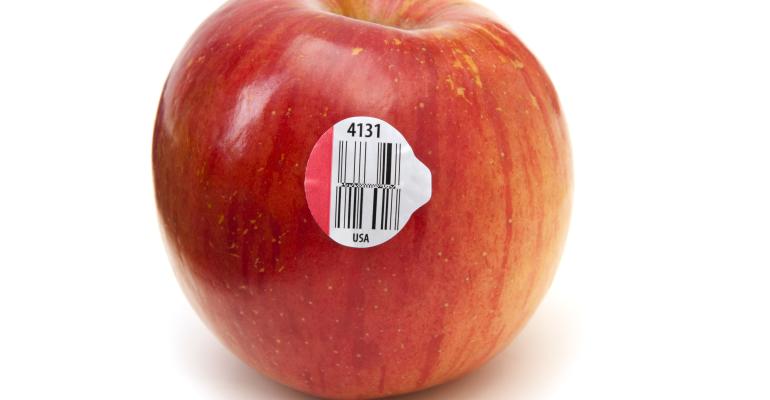 Antony Yousefian is VP of Climate & Circularity for Wiliot, an Internet of Things company. He oversees the company’s climate strategy, where he accelerates the development and implementation of climate products that enable businesses to track in real-time their supply chain’s impact on nature and carbon footprint.
Antony Yousefian is VP of Climate & Circularity for Wiliot, an Internet of Things company. He oversees the company’s climate strategy, where he accelerates the development and implementation of climate products that enable businesses to track in real-time their supply chain’s impact on nature and carbon footprint.
Years ago, I worked with a sandwich company that was looking to reinvent its supply chain operations by implementing a traceability system that would track fresh ingredients from source to store. Not only to streamline operations and reduce waste, but also to ensure food safety. It was an ambitious, laudable vision, which included wireless tags for tracking lettuce shipments, among others. But the plan proved too ambitious, costly, and, frankly, ahead of its time.
Things are different today. Witness the Food Safety Modernization Act of 2011. Included in the voluminous law signed by then-President Obama is section 204, which requires traceability for certain foods identified by the Food and Drug Administration. It doesn’t specify how to achieve traceability, just that people and companies that manufacture, process, pack, or hold the specified foods must maintain certain data records about their handling and be able to share that data with the FDA within 24 hours. And they must be able to do it by Jan. 20, 2026 — admittedly, a real challenge.
As Winston Churchill (or former White House Chief of Staff and former Chicago Mayor Rahm Emanuel) might say, the food industry shouldn’t let a good crisis go to waste. Food safety mandates are a chance to reimagine supply chains for the better. It may have been too early for my sandwich client, but today, traceability technology exists that won’t just ease companies’ compliance with FSMA section 204, but will also help them operate more efficiently, eliminate waste in the food chain, and even help protect the planet while they’re at it.
Food traceability is now critical
According to data from the Centers for Disease Control (CDC), 1-in-six Americans — about 48 million people — get sick each year from unsafe food. Among the most infamous examples of food-borne illness was a 2006 E. coli outbreak that was linked to fresh spinach. Three people died, including a two-year-old boy from Idaho. Hundreds were sickened as authorities and industry scrambled to issue a recall.
Over the years, such occurrences have continued. As recently as this spring, a grower in Michigan voluntarily recalled salad kits for fear of listeria contamination. It can be hard to pinpoint the source of food-borne illness, leading to sweeping recalls that often include perfectly safe products. For its part, industry groups like the International Fresh Produce Association (IFPA) have worked hard to implement systems for more precisely tracking food products and improving the precision of food safety monitoring. At the same time, the government has been rolling out rules for FSMA. And for many in the food chain, there are only a few years left before they must comply with traceability requirements.
But here’s a key challenge for companies in the food supply chain: FSMA section 204 doesn’t apply to all food. Just some. Fresh tomatoes must be tracked, but not oranges. Ricotta cheese, yes; but hard cheeses, no. Traceability data must only be kept for foods on the FDA’s traceability list. Which could pose a conundrum for many.
“In our industry, major buyers have indicated they can’t support one process for tomatoes and leafy greens and another for other foods,” explained one industry expert who works on food traceability and previously ran distribution centers for major grocers. “They have to have one process for all produce.”
In other words, even though they don’t have to turn over traceability data for everything they handle, whatever process they use to collect traceability data should be uniform across their operations. After all, some food on this list needs to be stored at one temperature, some at another. Experts estimate that for every 20 pallets of fresh food, perhaps four include items that are on the FDA traceability list. It would be tricky to set up a distribution center where tracking is done on one area and not another. Not to mention, at a time when it can be difficult to find workers to do jobs required throughout the food chain, creating handling instructions for some products and not others will likely lead to human error. As I’ll explain, it’s the human component of the solution that represents the biggest challenge.
So although FSMA 204 is agnostic about how companies must collect traceability data, it’s clear that automation technology must come into play. Which is an opportunity cloaked in a regulatory requirement.
The emergence of traceability solutions
In 2010, the IFPA joined with the Canadian Produce Marketing Association and GS1, the international standards organization for barcode technology, to create the Produce Traceability Initiative (PTI) and develop a harmonized tracking label for cases of food. Participating companies include Albertsons, Costco, and Walmart. Already, it’s estimated 70% of food cases in the U.S. supply chain carry PTI-compliant tracking labels, which must be scanned as they’re distributed to stores.
Keep in mind, produce is just one food type on the FDA’s traceability list, and other industry groups are exploring how their members will comply with FSMA 204. But as produce has often been at the center of food recalls in the past, what IFPA and PTI do will be noteworthy. And as they work to help companies comply, they understand that digitalization will be critical. The question becomes, how to digitalize? And why?
Barcodes, QR codes, and RFID are certainly options, but they require expensive, human-initiated scanning infrastructure. If it were feasible to track just the 20% of pallets that include FDA-identified foods, maybe it would be worth the expense and effort.
The other option is to track everything, using digital systems to send to the FDA only the tracking data they need. Now you’re in compliance. All the other data will allow food companies to create better supply chains.
Doing so requires new technology, what’s known as ambient IoT, whereby postage stamp-sized, ultra-low-cost Bluetooth radios can be affixed to anything in the supply chain and communicate their status wirelessly. They harvest their own power, so no batteries are needed, and create universal real-time visibility into production, distribution, shipping, and retail.
Indeed, complying with FSMA section 204 by 2026 will be a challenge. And it will require new solutions to constantly collect traceability data. But solutions now exist that turn the challenge into an industry-changing opportunity. We can agree that saving lives by protecting against food-borne illness is critical. With ambient IoT, an automated traceability system can also reduce food waste, ensure freshness and quality, and even provide real-time insight into the carbon footprint of supply chain operations.
It’s a vision other companies have had in the past. Now it’s feasible. And if we get started now, it’s even feasible by 2026.





